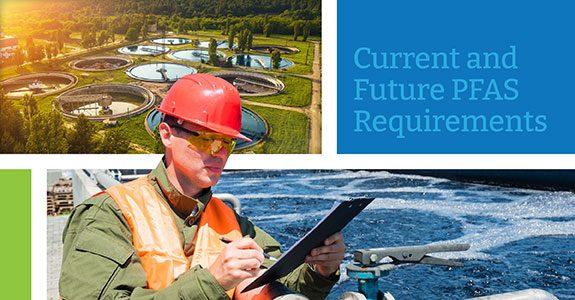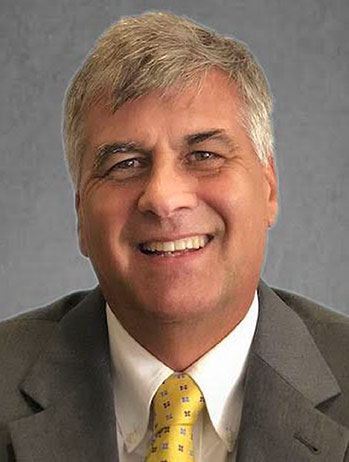
Current and Future Requirements in PFAS Compliance, Assessment and Remediation: What You Need to Know and Why
March 7, 2022
By: Rick Shoyer
Part 2 of a special, four-blog series
If your organization is affected or potentially affected by PFAS, then you’ve probably been overwhelmed with blogs, emails, and news alerts regarding all the proposed regulation changes and developments. When it comes to compliance, assessment and remediation, there’s a lot to sort through, but I’ve assembled this brief post to highlight some of the most impactful developments in the PFAS landscape, and a few important considerations to keep in mind.
Some of the most notable trends and developments in PFAS
- The need to identify your potential exposures
Be knowledgeable of what PFAS chemicals/compounds are or have been used at your facility, or in the case of wastewater, knowledge of the presence of PFAS incoming to provide insight on who or what may be a source of potential problems. This is why it’s advantageous to look for many compounds in the course of your analysis to identify specific sources.
- Your sampling may not always be appropriate
PFAS is ubiquitous, and may not always be attributed to you or your property. Evaluate potential sources, which may be miles away.
- Reporting larger PFAS lists may be appropriate
In general, I tell our clients to only report compounds you need to report. When addressing PFAS, often reporting a larger suite of PFAS compounds can be beneficial in identifying the proper source or differentiation of PFAS sources.
A few of my most frequently asked PFAS questions
- What are my current & near future PFAS requirements?
In the case of annual Toxic Release Inventory (TRI) reporting, the EPA has been increasing its oversight of this program and has been penalizing companies for failing to report certain required compounds. The EPA is targeting numerous industries suspected of using PFAS materials through regulatory reporting, sampling and analysis. The EPA PFAS roadmap covers a lot, but you need to understand what you’re doing, what you need to do, and plan accordingly.
- How do I protect against uncertain liabilities?
Have a solid understanding and knowledge of what’s around you. Once you know what’s around you, then sample, analyze and determine if you have any liabilities for compounds you are using.
- When do you sample, and which method & reporting list should you use?
The goal is to obtain accurate and defensible data that can be reproduced. In the PFAS arena this has become more challenging, with the use of draft analytical methods, or applying them to unintended media, lack of laboratory and regulatory standards and reporting lists. Whenever possible use isotope dilution methods from experienced/certified laboratories. Report expanded lists and apply forensic methods and tools to differentiate PFAS sources.
To learn more about the constantly changing PFAS landscape, join me for an informative webinar.
I’m pleased to be a panelist on the upcoming PFAS focused webinar The 2022 PFAS Crystal Ball, March 10, 2022 @ 2 PM EST. I’ll be elaborating on these topics alongside some other experts from the Montrose family. Join us to learn more about your PFAS compliance, analysis and remeditation, and what’s coming up in the PFAS landscape – what you need to know, and where you can find answers to your questions.
The 2022 PFAS Crystal Ball: What’s Coming, and How You Can Be Ready
A Blog Series and an Informative Webinar
- Part 1: PFAS Regulatory Developments: Concerns, Employee Safety and Community Impact:
What You Need to Know to Stay Ahead of The Curve - Part 2: Current and Future Requirements in PFAS Compliance, Assessment and Remediation:
What You Need to Know and Why - Part 3: PFAS: Regulatory Constraints from Both an Analytical Methodology and Regulatory Perspective
- Part 4: PFAS Remediation: Fundamental Challenges for the Short and Long Term
 Rick Shoyer – Montrose Environmental Panelist
Rick Shoyer – Montrose Environmental Panelist
Mr. Shoyer has spent the past 35+ years investigating and remediating organic and inorganic substances both in-situ and ex-situ. Mr. Shoyer’s current focus has been with per- and polyfluorinated alkyl substances (PFAS), 1,4-Dioxane, and 1,2,3-Trichlorpropane, and he provides environmental technical assistance to a city in New York whose drinking water supply has been impacted by PFAS. Specific experience has included characterization of surface water supplies; GAC, anion exchange resins and advanced oxidation PFAS removal performance effectiveness; and fate and transport assessments of source releases. Mr. Shoyer has also performed extensive research on alternative fluorine free foams (FFFs) and the various aqueous film forming foams (AFFFs), one major contributor of PFAS being released into the environment. He has presented at various forums on PFAS and other emerging contaminants and is a Licensed Site Remediation Professional (LSRP) and N-2 Industrial Operator in the State of New Jersey.

